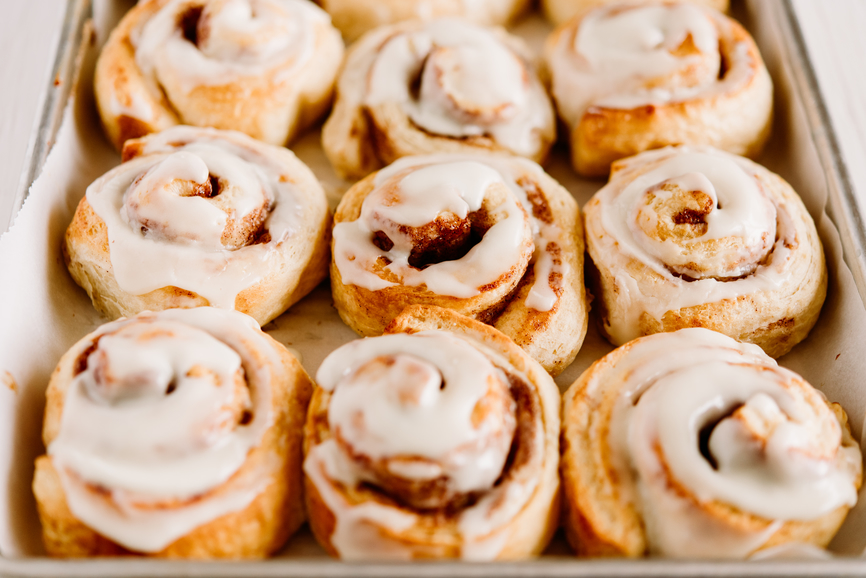As the time to make holiday cookies, cakes, and crumbles quickly approaches, finding allergy-friendly ingredient swaps is top of mind for Auzerais Bellamy, a Michelin-starred pastry chef and the founder of Blondery, a female-owned bakery based in Brooklyn, New York, that specializes in making gourmet blondies, like their sweet potato blondie made with purple ube yams.
We recently spoke with chef Bellamy, and she revealed that there’s one type of gluten-free baking flour she swears by when developing recipes for her bakery that doesn’t compromise on flavor, texture, or consistency. Find out which gluten-free flour is her all-time favorite, plus a few additional pro-approved baking tips to ensure your baked goods come out perfect every single time this holiday season.
The best gluten-free flour for baking, according to a pastry chef
Choosing the right ingredients to make delicious blondies isn’t a task chef Bellamy takes lightly. After all, she spent 10 years refining her recipe for blondies to ensure they were as delicious as could be. This means that when crafting her popular gluten-free flavors like Brooklyn Blackout, picking the best gluten-free flour for baking on the market was non-negotiable. “Our Brooklyn blackout blondie just happens to be gluten-free. Have you ever seen the words ‘gluten-free’ and thought, that’s probably cardboard disguised as food? Yeah, me too,” Bellamy says. That’s why she prides herself on the delicious GF recipe that definitely does not taste like cardboard whatsoever.
So, what’s the secret ingredient? According to Bellamy, there’s one type of baking flour that reigns superior when it comes to making her delicious gluten-free blondies. “For gluten-free baking, I love Bob’s Red Mill 1-to-1 Baking Flour. It’s best used in pastries like cookies, cakes, and, obviously, blondies,” Bellamy says. The gluten-free flour is formulated with a one-to-one ratio, meaning you don’t have to fuss about converting the flour proportions or messing with a recipe.
Best of all, it doesn’t compromise on flavor. According to Bellamy, you won’t even be able to tell the difference. “It’s perfectly formulated to create baked goods with terrific taste and texture and doesn’t require any additional specialty ingredients or custom measurements,” she says. And it also helps that her delicious Brooklyn Blackout blondie, which is inspired by the legendary Brooklyn-based Ebinger’s Bakery, also features a cocoa noir blondie base, 64 percent chocolate ganache, and dark chocolate vermicelli that tastes like soft dark chocolate fudge. Um, yum. “We call it a blondie, but who are we kidding; it’s a brownie,” she laughs.
4 additional (and essential) baking tips this pastry chef swears by
1. Use the right egg substitute
If you have an egg allergy or follow a plant-based diet, Bellamy recommends one type of egg substitute, which she says can replace both egg whites and yolks in a recipe. “For vegan baking, we use the Ener-G egg replacer. We like it because it is a blend of potato starch and tapioca starch that mimics what eggs do in recipes to bind baked ingredients together, but it’s completely egg-free.”
2. Swap your round cake pans for sheet trays
Ever leave the round batter-filled pan in the oven a little too long and have dry, overly-browned edges around your cake? Same. Bellamy has one simple solution: Ditch the round cake pan once and for all. “Bake your cakes in a sheet tray rather than a round cake pan for even and moist layers,” she says. Baking in sheet pans helps the batter bake more evenly (no more jiggly, undercooked, and sunken cake centers). Then, you can use a stainless steel cutting ring to cut out your desired shape. Goodbye, dry, crumbly edges.
3. Take notes, notes, notes
Was the cake perfectly golden at thirty minutes, or was it thirty-two? Ugh, I can’t remember. Spare yourself the headache of remembering every small tweak you made to a recipe and the inner dialogue of turmoil as you struggle to recreate your steps a year later and keep a pen and paper handy while you bake. “Use a thermometer and timer to take notes of what works for you this year so that you can continue to perfect your recipes for next year,” Bellamy says.
4. Invest in an offset spatula
Bellamy says the one tool she just can’t live without is a mini offset spatula, which can be considered a small but mighty kitchen tool that’s basically a secret weapon for a baker. Aside from frosting desserts, the spatula can also be used to spread batter evenly, remove excess crumbs, or place small decorations on a finished dessert. You name it, it can do it (for the most part).
Seriously, you NEED to try these gluten-free herb parmesan biscuits:
